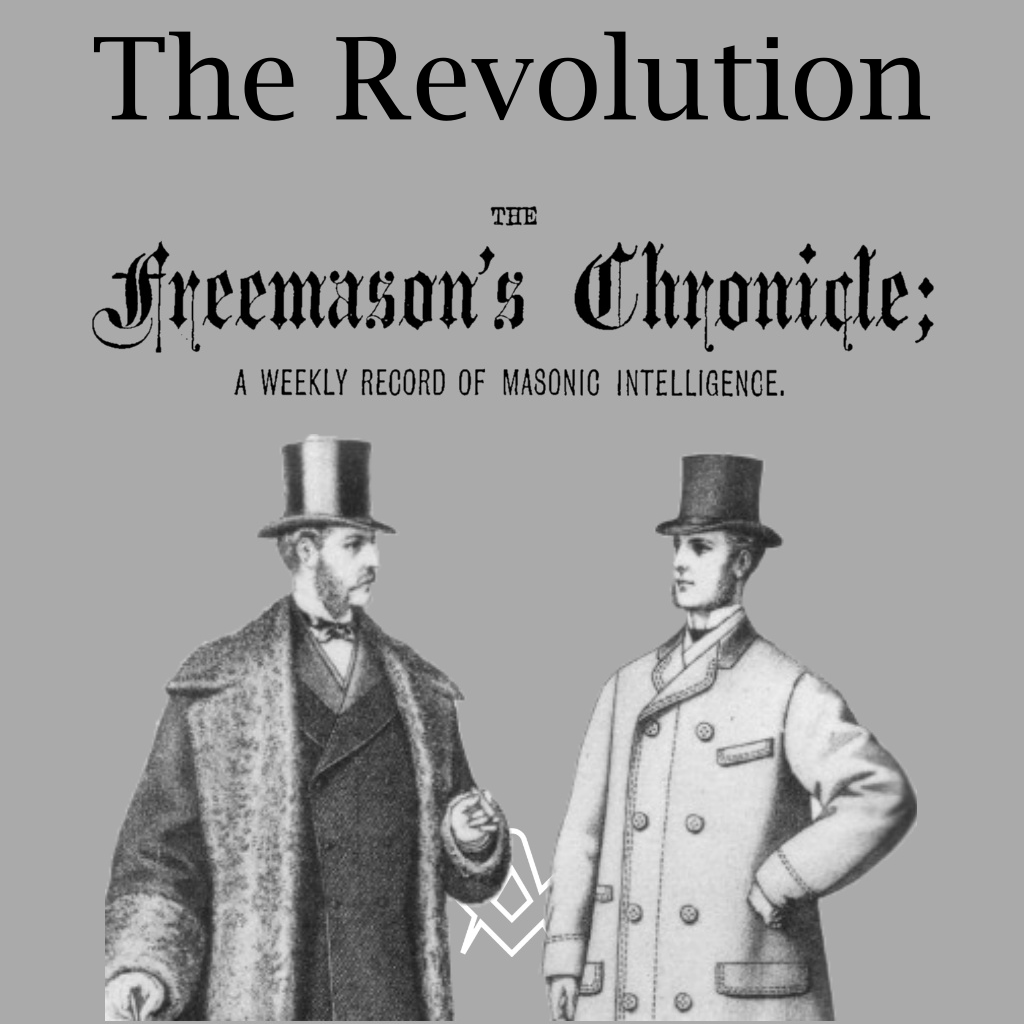Freemasonry in the United States during and after the Revolution.
[The American Revolution was an ideological and political revolution which occurred in colonial North America between 1765 and 1783.
The Americans in the Thirteen Colonies defeated the British in the American Revolutionary War (1775–1783), gaining independence from the British Crown and establishing the United States of America, the first modern constitutional liberal democracy.]
We are indebted to a History of Philadelphia, by a Mr. Thompson Westcott, now current in one of the American journals, for the following particulars, which cannot fail to be in the highest degree interesting to our readers.

John Trumbull’s painting, Declaration of Independence, depicting the five-man drafting committee of the Declaration of Independence presenting their work to the Congress. The painting can be found on the back of the U.S. $2 bill. The original hangs in the US Capitol rotunda.
IMAGE LINKED: wikimedia Attribution 4.0 International (CC BY 4.0)
During the earlier revolutionary movements, the Masonic Lodges of Ancient York Masons continued to meet with occasional interruptions. Lodge No. 3, met at Daniel Smith’s City Tavern, in Philadelphia, on St. John’s day 1775, and participated in a banquet.
On this occasion, we are told, thirteen members are said to have met, and, measuring all their proceedings by the patriotic number thirteen (in honour of the thirteen States),
. they had thirteen dishes of meats, banqueted thirteen hours, drank thirteen toasts, sang thirteen songs, and, with a capacity which must astound our brethren of this generation, drank thirteen bottles of wine and thirteen bowls of toddy,
. and it is added that, by way of consistency, the landlord’s bill amounted to £13.
During the occupation of the city by the British troops, its Lodges were interfered with, and, perhaps, suspended ; but one, probably connected with the Royal forces, appears to have met at Second Street and Elfreth’s Alley.
When, however, the city was evacuated, the return of the Whigs gave new spirit to Masonry.
The brethren re-assembled, and though, as the issue of the contest was yet doubtful, no formal assertion was made at the time that the ties connecting them with the Grand Lodge in England were severed, a feeling prevailed that the declaration of National Independence had virtually established a ground for such rupture.
Certainly, American Masons were in no way restrained in what they did by any regard for ancient authority.
PGM. William Ball was charged with the important duty of organising the Grand Lodge, and he summoned the brethren to meet on 16th December 1778, when Bro. Rev. William Smith was appointed Secretary protem, and Grand Officers were elected.
On St. John’s day of the same year, the Grand Lodge and subordinate Lodges celebrated the day by a procession and other ceremonies, the occasion being honoured by the presence of Bro. George Washington, who took part in the procession, supported by the Grand Master and his Deputy.
Divine service was held in Christ Church, after which they returned to the College, and afterwards dined in their respective Lodges, a collection amounting to £400, for the relief of the poor, appropriately closing this portion of the proceedings.
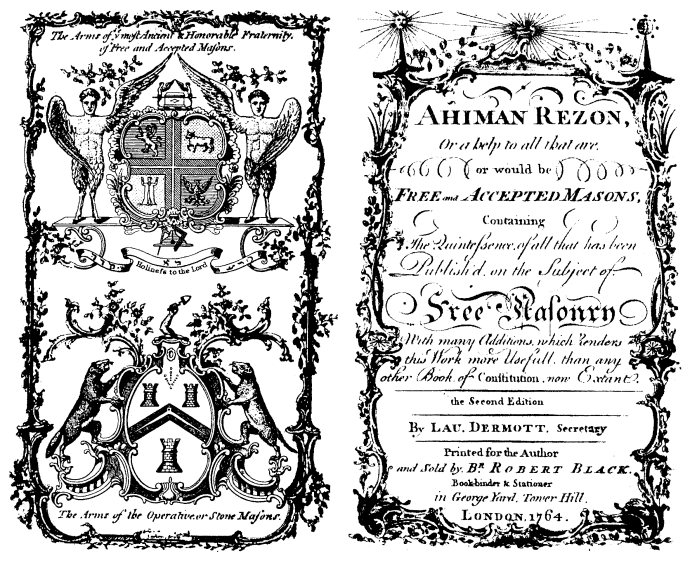
frontispiece L’Ahiman Rezon
IMAGE LINKED: wikimedia Attribution 4.0 International (CC BY 4.0)
The Book of Constitutions of this Grand Lodge or Ahiman Rezon (אֲחִימָן רְזוֹן) was a constitution written by Laurence Dermott for the Ancient Grand Lodge of England which was formed in 1751.
The formation of the Ancient Grand Lodge brought together lodges and Masons who, believing themselves to be part of an older, original Masonic tradition, had chosen not to ally themselves with the previously formed Moderns Grand Lodge of 1717.
At the meeting of Grand Lodge in this year, a committee was appointed to present a new code of laws for its future government, and, in November 1781, Bro. Rev. William Smith presented an abridgement of Dermot’s ” Ahiman Rezon,” with alterations and additions; and it was unanimously accepted.
In 1780, this abridgement was published, under the title of ” The Abridged Ahiman Rezon, as a help to all that are, or would be Free and Accepted Masons,” and itis now known among the Craft as ” Smith’s Ahiman Rezon.”

Frederick II (German: Friedrich II.; 24 January 1712 – 17 August 1786) was a Prussian king and military leader who ruled the Kingdom of Prussia from 1740 until 1786, at 46 years the longest reign of any Hohenzollern king.
IMAGE LINKED: wikimedia Attribution 4.0 International (CC BY 4.0)
In the meantime, an attempt was made by the Grand Lodge of Pennsylvania to establish a Grand Lodge of the United States, even before the Revolutionary War was over.
A special communication was held for this purpose, in 1780, and resolutions were adopted in favour of a General Grand Lodge, with General George Washington as General Grand Master for the whole of the United States, but the proposition was coldly received by the Grand Lodge of Virginia, and afterwards fell through.
In 1785, a Sublime Lodge of Perfection, according to the rites recommended by the King of Prussia, extending the Masonic degrees to 33, was constituted in the new Grand Lodge room in Black Horse Alley, and at the banquet Which followed at the City Tavern, the occasion was dignified with thirteen toasts, the first being in honour of the King of Prussia, and the second of Bro. George Washington.
The new room in Black Horse Alley could not have been occupied for a long time, for in the year following the meetings were again held in the Old Masonic Hall, built by the modern Masons in Lodge Alley.
This branch of the Order, however, declined very rapidly, and in 1785, an Act was passed by the Assembly of Pennsylvania, ordering the sale of the Masonic Hall.
The revenue from the rents and profits was to be given, two-thirds to subscribers and one-third to the first Lodge, and two-thirds of the proceeds of the sale were paid to subscribers then living, and one-third to the first Lodge for charitable purposes.
The sale was effected in 1792,the first Lodge handing over its share to the City Corporation in 1793, to form a fund for the purchase of fuel for the poor.
In December 1786, the Grand Lodge of Ancient York Masons, which had rented the Masonic Hall for some time, resumed its meetings in Vidells Alley, where they had been held before the outbreak of the Revolution.
As might, perhaps, have been foreseen, a severance from England of the Grand Lodge of Pennsylvania, when once the Independence of the United States was established, was soon determined open.
A special meeting of Grand Lodge, with subordinate Lodges, was held in September 1783, when it was ” Resolved, that it is improper that the Grand Lodge of Pennsylvania should remain any longer under the authority of any foreign Grand Lodge.”
At a convention subsequently held, it was unanimously resolved that the heretofore Provincial Grand Lodge of Pennsylvania should be determined, and the Lodges under its jurisdiction should form themselves into a Grand Lodge, to be called ” The Grand Lodge of Pennsylvania and Masonic jurisdiction thereunto belonging,” and to be holden in Philadelphia.
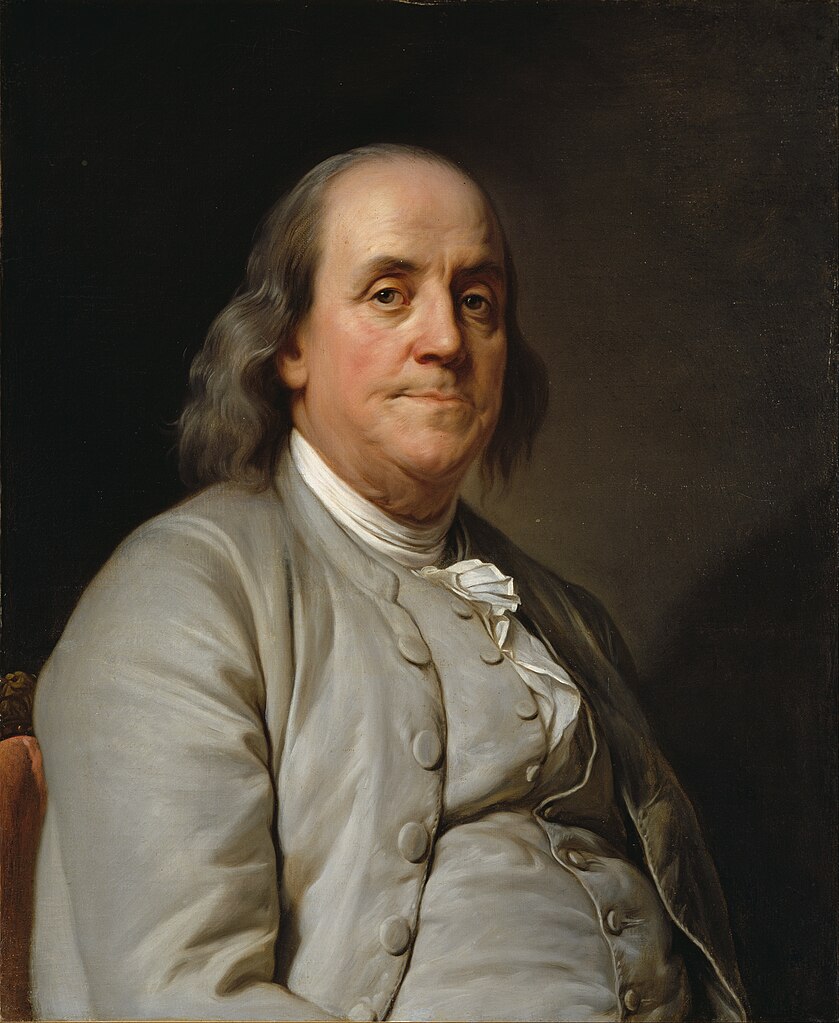
Benjamin Franklin FRS FRSA FRSE (1706 – 1790)
IMAGE LINKED: wikimedia Attribution 4.0 International (CC BY 4.0)
Benjamin Franklin FRS FRSA FRSE (1706 – 1790) was one of the Founding Fathers of the United States.
A polymath, he was a leading writer, printer, political philosopher, politician, Freemason, postmaster, scientist, inventor, humorist, civic activist, statesman, and diplomat.
As a scientist, he was a major figure in the American Enlightenment and the history of physics for his discoveries and theories regarding electricity.
As an inventor, he is known for the lightning rod, bifocals, and the Franklin stove, among other inventions.
He founded many civic organizations, including the Library Company, Philadelphia’s first fire department, and the University of Pennsylvania.
When Franklin died in1790, the Masonic Lodges took no part in the funeral procession, he being a modern Mason, but an address of respect had, some years previously, been presented to him.
But, when General Washington died, in December 1799, Congress requested the society of Freemasons to attend as mourners, and this request was complied with, Lodge L’Amenite No. 73, holding also a Lodge of sorrow in honour of the deceased brother.
The Craft were also present on the occasion of the funeral solemnity, on 22nd January 1800, Grand Lodge being present, and the following Blue Lodges, L’Amenite, No. 73; -Philadelphia Lodge, No. 72 ; Orange Lodge, No. 71; Concordia Lodge, No. 67; Washington Lodge, No. 59; Harmony Lodge, No. 52; Lodge No. 19 ; Lodge No. 9 ; Lodge No. 3 and Lodge No. 2; between three and four hundred Masons being in the parade.
As regards Military Lodges during the Revolution, these were held under direction of officers of regiments, the ceremonies being made as complete as could be under the circumstances.
It is known that before the war, brothers of the 17th Regiment British were granted a warrant to work as a Lodge by the Grand Lodge of Pennsylvania, and this was designated Lodge No. 18.
The present Lodge, No. 19, or Montgomery Lodge, was established by warrant granted in May 1779, to the ” First Regiment of Pennsylvania Volunteer Artillery.”
This Lodge travelled with the Pennsylvania line during the war, and in 1784 its warrant was surrendered to Grand Lodge, a new one, under which it is still worked, being issued in place thereof in 1786.
Other warrants for travelling Lodges were issued by the Grand Lodge of Pennsylvania, not only to Pennsylvanian lodges, but to those of other states, among them being warrant No. 29 to North Carolina Regiment Continental Army; Warrant No. 27 to Maryland Regiment ditto ; Warrant No. 36 to New Jersey Brigade ditto.
The subject of Royal Arch Masonry appears to have caused some difficulty to the Order in Pennsylvania.
According to “Ahiman Rezon,” the first Royal Arch Chapter in America of which any account exists was held in Philadelphia before 1758.
This chapter worked under the warrant of Lodge No. 3, and had communication with a military chapter working under a warrant granted by the Grand Lodge of England.
In 1795, one Molan, attempted to form an independent Royal Arch Chapter under the warrants of Lodges No. 5, 19, 52 and 67, and a Maryland and Georgia Lodge.
But the Grand Lodge stepped in and suspended these Lodges, further declaring that Molan ought not to be received as a Mason by any of the Lodges under its jurisdiction.
The suspended Lodges were afterwards restored, and it was resolved to erect a Grand Royal Arch Chapter, under the authority of the Grand Lodge of Pennsylvania.
This was the first Chapter established in the United States.
In 1798 it was decreed that no warrant for a chapter should be granted by the Grand Chapter, except to be worked under the warrant of a regular subsisting Lodge.
Innovations, however, were meditated in other parts of the Union. In 1797, a convention of several chapters in the northern States was held at Boston, delegates from Massachusetts, New Hampshire, Rhode Island, Connecticut, Vermont and New York attending.
By this convention it was declared, in opposition to the Pennsylvania precedent, that no Grand Lodge had any authority to exercise any authority over any convention or Chapter of Royal Arch Masons, and co-operation was invited to assist in the opening of a Grand Chapter at Hartford, towards the end of January of the ensuing year.
This was done, and a Grand Chapter erected, having authority over the above States.
The Grand Lodge of Pennsylvania protested against this action, but in vain.
The innovation spread, causing much inconvenience to the Royal Arch Masons of Pennsylvania, with whom it became a subject of great complaint.
Extract: The Freemason’s Chronicle – February 6, 1875
Additional image research by the Square Editorial team

The Historic Mansions and Buildings of Philadelphia
By: Thompson Westcott
Mr. Thompson Westcott, the author, is perfectly at home on this subject, having written “The Guide Book to Philadelphia,” and a history of the city. In the present volume, he has given a description of all the interesting historic buildings of the city, e.g. Penn’s Cottage, Swedes’ Church, Bartram’s House, Christ Church, Independence Hall, the Slate Roof House or Mount Pleasant, together with a notice of their owners and occupants.
 The Freemasons Chronicle, a weekly record of masonic intelligence, was first published 2nd January 1875 London, England as an independent weekly journal of masonic interest and continued for 27 years.
The Freemasons Chronicle, a weekly record of masonic intelligence, was first published 2nd January 1875 London, England as an independent weekly journal of masonic interest and continued for 27 years.
It should be the business of a journal devoted to the interests of the Order to attempt the removal of prejudices such as these, which, though they may have little perceptible influence upon the prosperity of the Fraternity, yet have the effect of preventing timid or ill-informed persons from enlisting under its banner.
It will not only attempt to keep pace with the growing literary requirements of the day, but it will seek to exhibit the Order to the non-Masonic world divested of its technical details, and clothed in the garb of Charity and Brotherly Love.
The questions of the hour, which exercise the minds of thoughtful men, will be handled freely and broadly, without any tinge of political or sectarian bias.
The memoranda of Masonic gatherings which will appear from week to week, will be full and accurate; and as free interchange of opinion is one of the best signs of life and vigour in any society, ample scope will be given for Correspondence on topics of interest to the Order.
If we may venture upon a new rendering of words which recent events have made memorable, we will say here, once and for all, that we will be keen men of business, and will spare no effort, consistent with honour, to achieve commercial success; but first, and before all things, we will prove to our brethren and the world that we are FREEMASONS.
Recent Articles: The Freemason's Chronicle
 Operative And Speculative Masonry Explore the fascinating transition from Operative to Speculative Masonry in our latest post. Discover historical insights from Augustus C. L. Arnold and Rev. Wm. P. Strickland, shedding light on Freemasonry's evolution and its enduring principles. Dive into the rich history and significant milestones that shaped modern Freemasonry. - The Freemason's Chronicle - 2 September 1876 |
 Discover the true essence of Freemasonry, an ancient order founded on the profound principles of love for God and man. It's a call to rise above mere appearances, to embody genuine virtue and benevolence, transcending societal pretense. Embrace the transformative power of simplicity, and let the authentic glories of Freemasonry inspire your path. |
 Discover the intriguing story of a man who became a Mason but openly professed his dislike for the institution. Unravel the peculiar circumstances that led him down this path and explore the unexpected consequences that followed. Dive into this thought-provoking account that challenges our notions of loyalty and reveals the complexities of human nature within the Masonic fraternity. |
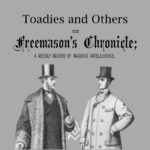 In the realm of Masonry, the principles of equality and respect are paramount. Yet, the presence of toadies—those who obsequiously seek favour from the influential—threatens these ideals. While Masonry embraces diverse beliefs and backgrounds, it rejects the sycophantic behaviours of toadies, flunkeys, and tuft-hunters, urging members to uphold genuine respect and self-worth. The Freemason's Chronicle - 22nd January 1876 |
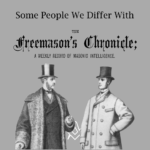 Unveiling the Unpleasant: Some People We Differ With Discover the intriguing dynamics of quarrels within the Masonic brotherhood. From the cantankerous to the litigious, the peevish to the vengeful, delve into the characters that challenge fraternal harmony. Explore their motives, temperaments, and the art of navigating disputes with these fascinating brethren. Brace yourself for a riveting journey into the world of conflicting personalities. |
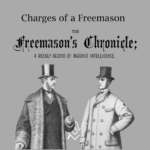 Unravelling the Masonic Mystique: A Deep Dive into the Freemasons' Charges - Explore the intricate world of Freemasonry, its principles, rituals, and the mechanisms for resolving internal disputes. Discover how this ancient fraternity fosters unity, promotes moral conduct, and upholds the sanctity of its secrets, while navigating the complexities of modern society. - The Freemason's Chronicle - 4 December 1875 |
 Unlock the hidden lessons of Masonic Studies! Don't settle for superficial knowledge or mere rituals. Discover the true depth and meaning behind Freemasonry. Expand your understanding of Tracing-Boards, Lectures, and more. Join regular Lodges of Instruction to enhance your Masonic journey. Become a knowledgeable Freemason, not just a token-bearer. Unleash the power of true Masonic wisdom today! |
 Uncover the incredible story of how Masonry saved the life of a Crimean War foot soldier in this historical and masonic account. Through the first hand experience of a soldier engaged in fierce hand-to-hand combat, witness the fateful encounter with a Russian Freemason that changed the course of his life. Learn how brotherhood and a deep dedication to the craft can lead to unforeseen and life-saving circumstances on the battlefield. |
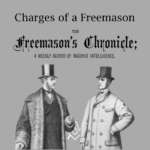 The Freemason's Chronicle - Charges of a Freemason The secrets of Masonry are the exclusive property of the Craft, and can never be communicated to one who is a mere labourer and not an accepted Mason. Hence, no labourer, that is, one who has not been regularly initiated in a legal Lodge. Article first published in The Freemason's Chronicle, 27 November 1875 |
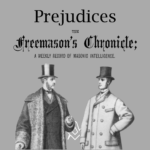 The Freemason's Chronicle - Prejudices Prejudices are partial judgments in favour of, or against certain persons or things, and, for convenience sake, may be ranged in two categories—those which are, comparatively speaking, harmless, and those which are harmful. Article first published in The Freemason's Chronicle, Oct. 2 1875. |
 The Freemason's Chronicle - Cliques Is Freemasonry - a Clique ? Man has been defined as a gregarious animal, but in his highly civilised condition he is gregarious only to a limited extent. First published in The Freemason's Chronicle, Oct. 2 1875, addresses the same challenges then as now. |
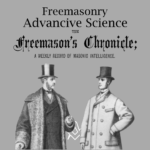 The Freemason's Chronicle - Freemasonry - an Advancive Science Is Freemasonry - an Advancive Science ? Not to confuse advancement with innovation. Has it been the case that Freemasonry's survival for 300 years plus is due to being an Advancive Science, tending to advance. First published in The Freemason's Chronicle 18 September 1875, addresses the same challenges then as now. |
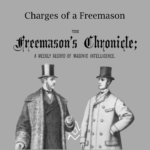 The Freemason's Chronicle - Charges Of A Freemason An interpretation of the "Charges of a Freemason", written Bro. Cornelius Moore and published in 1875, that introduce certain opinions that for some readers, will not sit well in contemporary times. - The Freemason's Chronicle, Sept. 11, 1875 |
 On The Order Of The Temple And Its Doctrine. THE Order of the Temple is divided into two great classes, denominated respectively the Order of the Temple and the Eastern Order. The Eastern Order gave birth to the Order of the Temple, and in the course of time has become an appendage of the latter. It is in ancient Egypt that we find the cradle of the Eastern Order. The Freemason's Chronicle, Sept. 4, 1875 |
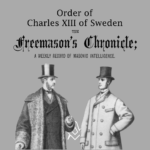 Order of Charles XIII of Sweden The following translation of the Manifesto of King JL Charles XIII of Sweden, on the occasion of his establishing the Masonic Order which bears his name, and of the Statutes of the said Order, may be interesting to our readers. The Freemason's Chronicle, Aug. 28, 1875 |
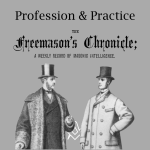 Most of our readers in the course of their experience, have doubtless met with enthusiastic brethren who take it for granted that a Mason can do no wrong. These enthusiasts are thoroughly convinced that the vast majority of those who join the Order are the most benevolent, the most moral, and the very noblest members of society. - The Freemason's Chronicle 10 July 1875 |
 An article investigating the relationship between masonry and citizenship. Are the principles of Freemasonry aligned with the freemason's claim to be a better citizen of the world? The Freemason's Chronicle - 19 June 1875 |
 A visitor must make clear his identity to the satisfaction of the Lodge he proposes to visit. More than once have we been asked to explain our views as to the reception of strangers in a Lodge. - The Freemason's Chronicle - 29 May 1875 |
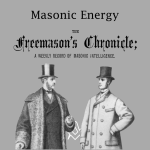 Is there reason in the accusation that Masonic energy looks only to a course of good feeds, when we can point to such grand results as have been achieved in these latter years, both in respect of the extension of our Order ? - 1May 1875 |
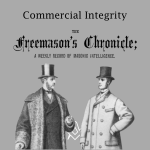 Implementing Freemasonry's peculiar system of morality in our day to day business affairs was the topic of this article, Commercial Integrity, first published in The Freemason's Chronicle - 8 May 1875 |
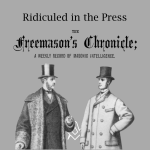 Ridicule has been somewhat illogically described as the test of truth. If it were so, Freemasonry ought to have perished long since. Two press reports from May 1875 covering the |
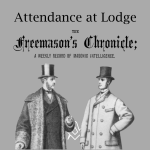 There are many things which Freemasonry will do for a man in the way of opening his mind and giving him larger and kindlier views of life, but Freemasonry itself, cannot eradicate the natural bias of the disposition. |
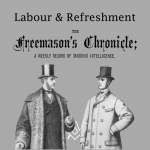 There is, we fear, too marked a tendency in very many Lodges to hasten through its labours, with a view to entering, as soon as possible, upon the business of refreshment. - The Freemason's Chronicle 17th April, 1875 |
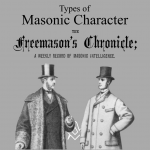 Another example that demonstrates that nothing really changes in Freemasonry. In an article the Types of Masonic Character published 145 years ago in The Freemason's Chronicle 10th April, 1875 |
 A brief history on the relationship between the British Monarchy and the craft - The Freemason's Chronicle 20th March , 1875 |
 What are the qualities of a convivial man and how does this dovetail perfectly in to Freemasonry ? 16th March, 1875 |
 A review of the "Sketch for the History of the Dionysian Artificers," a fragment, by Hyppoli to Joseph Da Costa - This little work may be regarded as, so to speak, the Holy Grail of Masonry. |
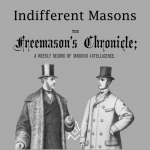 Nothing really changes, an article Indifferent Masons, From Le Monde Maçonnique 1874. Translation published in The Freemason's Chronicle 20th February, 1875 |
 In handling an intruder in the lodge, we endeavoured to show that a good Mason should be a gentleman, and a sincere man. The Freemason's Chronicle 20th February, 1875 |
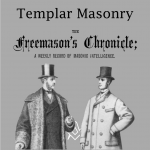 Templar Masonry - a historical aspect of the Religious and Military Order of the Temple published in The Freemason's Chronicle 13th February, 1875 |
 Secrecy perhaps the strongest objection urged by the enemies of the Masonic Order against its existence published in The Freemason's Chronicle 20th March 1875 |
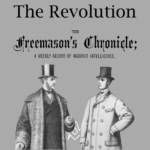 Freemasonry In The United States during And After The Revolution We take a look at Freemasonry in the United States during and after the Revolution first published in The Freemason's Chronicle - February 6, 1875 |
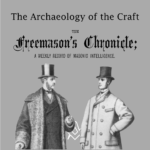 We take a look at the archaeological connection with the Craft, first published in The Freemason's Chronicle - January 30, 1875 |
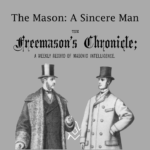 What it means to a Freemason to be a sincere man. Extract: first published in The Freemason's Chronicle - January 23, 1875 |
 What it means to a Freemason to be a citizen of the world ? First published in The Freemason's Chronicle - January 16, 1875 |
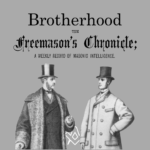 Brotherhood! In that one word what sympathetic associations arise. First published in The Freemason's Chronicle - January 9, 1875 |
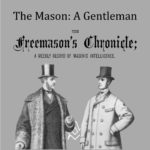 This opening article was written 145 years ago, yet it resonates with Freemasons today as it did then. First published in The Freemason's Chronicle, January 2, 1875, Issue 1 |
masonic knowledge
to be a better citizen of the world
share the square with two brothers

click image to open email app on mobile device



